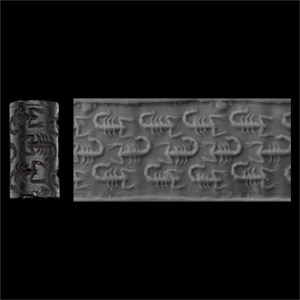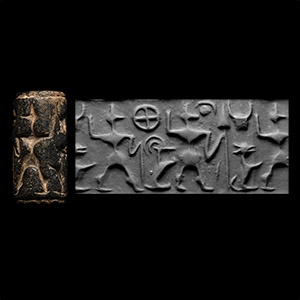Home > Auctions > 9 - 17 September 2025
Ancient Art, Antiquities, Books, Natural History & Coins
with Mahboubian Gallery, London, 1974.
This lot has been checked against the Interpol Database of stolen works of art and is accompanied by search certificate number no.12811-241409.
This lot has been cleared against the Art Loss Register database, and is accompanied by an illustrated lot declaration signed by the Head of the Antiquities Department, Dr Raffaele D'Amato.
Cf. Cort, L.A., Farhad, M., Gunter, A.C., Asian Tradition in Clay, The Hauge Gifts, Washington, 2000, pp.31, 45, for similar pottery.
English private collection, formed 1940s.
Private collection, UK.
This lot has been checked against the Interpol Database of stolen works of art and is accompanied by a search certificate number no.12795-241325.
This lot has been cleared against the Art Loss Register database, and is accompanied by an illustrated lot declaration signed by the Head of the Antiquities Department, Dr Raffaele D'Amato.
Cf. Mahboubian, Art of Ancient Iran: Copper and Bronze, London, 1997, no.321, p.247; cf. also similar vessel in MET, inventory no.47.100.84, in Colburn, H.P., ‘Ernst Herzfeld, Joseph Upton, and the Artaxerxes Phialai’ in Metropolitan Museum Journal 55, New York, 2020, pp.113-119, fig.1.
This bowl is possibly part of a set of nearly identical vessels, probably used at the table of royal Satrapes. Persian governors used banquets to display their wealth and power by imitating the royal banquets. It was a greater honour for them to receive a drinking vessel such as this as a gift from the King of the Kings – establishing one’s status as a royal dinner guest. No doubt it took practice to drink adeptly from a vessel like this: however the omphalos in the base would have made it easier to hold with one hand, with the middle finger hooked inside the indentation and the thumb stretched out to grip the vessel at or near the rim.
UK private collection before 2000.
Acquired on the UK art market.
Private collection, London, UK.
This lot has been cleared against the Art Loss Register database, and is accompanied by an illustrated lot declaration signed by the Head of the Antiquities Department, Dr Raffaele D'Amato.
UK collection, 1990s.
Acquired on the UK art market, before 2000.
Private collection, Mr M.V., a London-based businessman.
This lot has been cleared against the Art Loss Register database, and is accompanied by an illustrated lot declaration signed by the Head of the Antiquities Department, Dr Raffaele D'Amato.
Cf. Cleveland R.L., An Ancient South Arabian Necropolis, objects from the second campaign (1951) in the Timna Cemetery, Baltimore, 1951, pp.36ff, and pl.61ss, for similar examples (esp.61).
Along with the ibex, the bull is one of the most frequently represented animals in the sculpture found in the Arabian cemeteries, like Timna.
UK collection, 1990s.
Acquired on the UK art market, before 2000.
Private collection, Mr M.V., a London-based businessman.
This lot has been cleared against the Art Loss Register database, and is accompanied by an illustrated lot declaration signed by the Head of the Antiquities Department, Dr Raffaele D'Amato.
Cf. for the style of the head Cleveland R.L., An Ancient South Arabian Necropolis, objects from the second campaign (1951) in the Timna Cemetery, Baltimore, 1951, pls. 20,23. for similar examples; Simpson, S., Queen of Sheba. Treasures from Ancient Yemen, London, 2002, p.119, no.128.
Within South Arabia, there was a well-developed ancient tradition of carving funerary sculptures from a calcite-alabaster stone. The eyes and eyebrows of the heads were usually inlaid or (like probably here) highlighted with red or black pigment. The figure is inscribed on the base with the name of the dedicant, or with the personal name of the dead person.
UK collection, 1990s.
Acquired on the UK art market, before 2000.
Private collection, Mr M.V., a London-based businessman.
This lot has been cleared against the Art Loss Register database, and is accompanied by an illustrated lot declaration signed by the Head of the Antiquities Department, Dr Raffaele D'Amato.
Cf. Cleveland, R.L., An Ancient South Arabian Necropolis, objects from the second campaign (1951) in the Timna Cemetery, Baltimore, 1951, pl.15, for similar head.
Usually the heads of this typology are exhibited frontally and in symmetrical manner. Many of the heads have rather angular features. Nearly all the objects in this category were ornamented with inlay- the eyes and the eyebrows, in many cases. The sockets designed to receive the inlaid eyes are usually shaped in a rather naturalistic way.
From the collection of the late S, London, UK, 1970-2000.
Examined by Professor Wilfrid George Lambert FBA (1926-2011), historian, archaeologist, and specialist in Assyriology and Near Eastern archaeology, in the 1990s.
This lot has been cleared against the Art Loss Register database, and is accompanied by an illustrated lot declaration signed by the Head of the Antiquities Department, Dr Raffaele D'Amato.
From the collection of the late S., London, UK, 1970-2000.
Examined by Professor Wilfrid George Lambert FBA (1926-2011), historian, archaeologist, and specialist in Assyriology and Near Eastern archaeology, in the 1990s.
This lot has been cleared against the Art Loss Register database, and is accompanied by an illustrated lot declaration signed by the Head of the Antiquities Department, Dr Raffaele D'Amato.
From the 'S' collection, acquired 1970-1990s.
The collection was seen and studied by W.G. Lambert, late Professor of Assyriology at the University of Birmingham, 1970-1993.
This lot has been cleared against the Art Loss Register database, and is accompanied by an illustrated lot declaration signed by the Head of the Antiquities Department, Dr Raffaele D'Amato.
UK private collection, acquired 1980-1983.
Accompanied by a copy of a scholarly note, typed and signed by Professor Wilfrid George Lambert in 1992.
This lot has been cleared against the Art Loss Register database, and is accompanied by an illustrated lot declaration signed by the Head of the Antiquities Department, Dr Raffaele D'Amato.
From the collection of the late S, London, UK, 1970-2000.
Examined by Professor Wilfrid George Lambert FBA (1926-2011), historian, archaeologist, and specialist in Assyriology and Near Eastern archaeology, in the 1990s.
This lot has been cleared against the Art Loss Register database, and is accompanied by an illustrated lot declaration signed by the Head of the Antiquities Department, Dr Raffaele D'Amato.
Armand Trampitsch, Glyptique Archéologie, Paris, Hôtel Drouot, 13-14 May 1992, no.23 [Part].
Accompanied by a copy of a scholarly note, typed and signed by Professor Wilfrid George Lambert in 1992.
This lot has been cleared against the Art Loss Register database, and is accompanied by an illustrated lot declaration signed by the Head of the Antiquities Department, Dr Raffaele D'Amato.
109 - 120 of 3897 LOTS

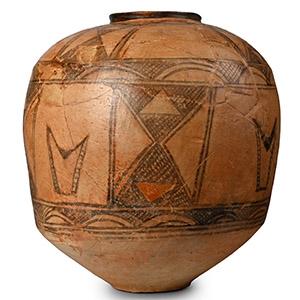
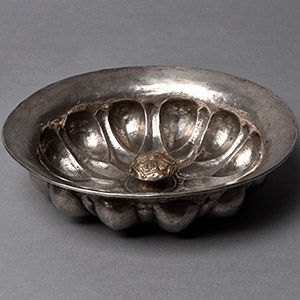
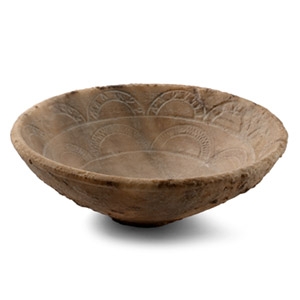
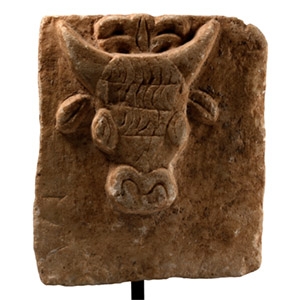


.jpg)
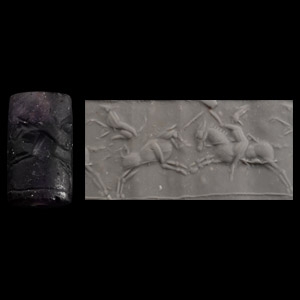
.jpg)
